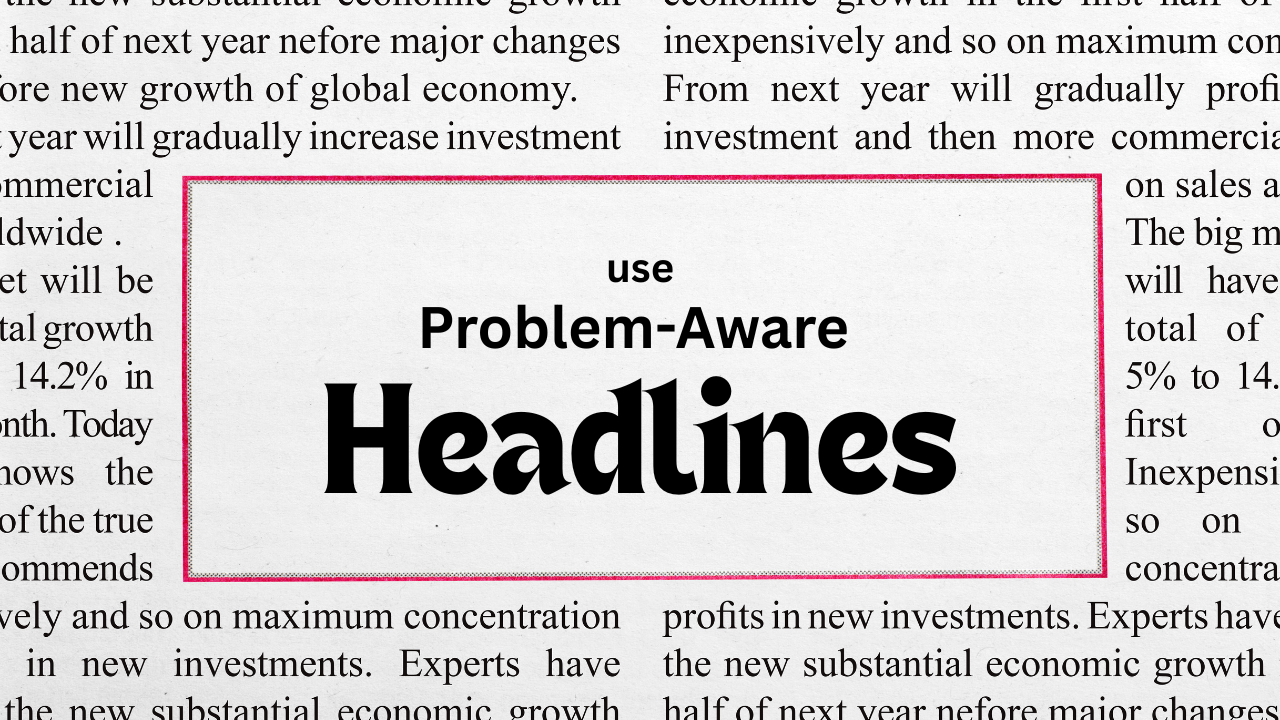You built your website with high hopes. You paid good money for a sleek design, added your logo, wrote up what your business does, and hit publish. Then you waited for the leads to roll in.
And waited. And waited some more.
Your analytics show that people visit your site. They land on your homepage, maybe click around a bit, and then… they’re gone. No contacts. No sign-ups. No sales. Just the digital equivalent of tumbleweeds blowing across your expensively designed ghost town.
This frustrating reality plays out for countless business owners every day. You know your product or service can genuinely help people. You’ve got happy customers who sing your praises. So why isn’t your website turning visitors into leads?
The painful truth is that most business websites suffer from the same critical problem: they talk all about the business and almost nothing about the customer. They read like digital brochures instead of conversations. They focus on features instead of transformations. They speak in industry jargon instead of human language.
The result? Potential customers visit, fail to see themselves and their problems reflected in your copy, and quickly click away to find someone who seems to understand them better.

Now, imagine a different scenario.
A potential customer lands on your website and feels an immediate sense of recognition. “This company gets me,” they think as they read your headline. As they scroll down, they see their exact challenges described with unbelievable accuracy. The questions swirling in their mind are addressed before they even have to ask.
They nod as they read, feeling understood and validated. Your solution feels like it was designed specifically for people just like them. The benefits you describe paint a picture of exactly the outcome they’ve been hoping for.
When they reach your call-to-action, clicking it feels like the natural next step in a conversation that’s already built trust. They’re not being “sold to” instead they’re being guided toward a solution they already want.
This magical connection doesn’t happen by accident. It happens when your website copy speaks directly to your ideal customer in language that resonates with their experiences, frustrations, desires, and dreams.
The difference between a website that converts visitors into customers and one that doesn’t often comes down to this simple truth: effective copy isn’t about you; it’s about them.

Closing the gap between a website that talks at visitors and one that connects with them isn’t as complicated as you might think. It doesn’t require an English degree or natural writing talent. What it does require is a systematic approach to understanding your customers and speaking directly to their needs.
The transformation begins with a fundamental shift in perspective. Instead of thinking of your website as a place to broadcast information about your business, think of it as a conversation with someone you want to help. Every element (from headlines to button text) should reflect that conversational, helpful approach.
Let’s break down the exact steps to make this transformation happen.
Before you write a single word of website copy, you need to study your ideal customer base. Your goal is to understand not just their demographic information, but their psychographic makeup this includes their thoughts, feelings, frustrations, and desires related to your offering.
The most effective website copy uses the very same language your customers use when they talk about their problems and desires. Not industry jargon. Not marketing terms. Real human language.
Start by collecting what I call “voice of customer” data. This is the raw, unfiltered language your potential customers use when discussing their challenges and goals.
There are several ways to gather this invaluable information:
Talk to your existing customers. Ask them what problems they were facing before they found you. What words did they type into Google when searching for a solution? What hesitations did they have before buying? What finally convinced them to work with you? Record these conversations (with permission) so you can capture their exact phrasing.
Review customer support conversations. Emails, chat logs, and support tickets contain gold mines of authentic customer language. Look for patterns in how they describe problems and ask questions.
Explore online communities where your potential customers hang out. Forums, social media groups, comments sections, and review sites are full of people openly discussing their challenges. Pay attention to recurring themes and emotional language.
Study reviews of your competitors. What do people love? What do they complain about? What language do they use to describe both the problems and the solutions?
As you collect this language, create a document where you organize these exact phrases into categories: problems, desires, objections, and triggers for seeking help. This document will become your copy bible, ensuring you’re speaking to customers in their language, not yours.

Your headline is the most important copy on your website. It’s the first thing visitors read, and they’ll decide in seconds whether to continue or click away. The most effective headlines aren’t clever or cute, they’re clear and relatable. They signal to the ideal customer: “This is for you.”
Problem-aware headlines work by acknowledging a specific pain point that your visitor is experiencing. When someone sees their exact problem reflected in your headline, they feel understood and are much more likely to keep reading.
Using your voice of customer research, identify the most common and emotionally charged problem your ideal customers face. This should become the foundation of your headline.
Compare these two headlines for a financial planning service:
Generic: “Comprehensive Financial Planning Solutions for Your Future”
Problem-aware: “Tired of Wondering If You’ll Ever Be Able to Retire Comfortably?”
The first headline could apply to any financial planning service and focuses on what the company does. The second speaks directly to an emotional pain point (uncertainty about retirement) that the ideal customer is likely experiencing.
For your subheadline, build on this connection by hinting at the transformation your business provides. Following our example:
“Our simple planning process has helped hundreds of families just like yours replace retirement anxiety with confidence without having to become financial experts themselves.”
This one-two punch of problem recognition followed by transformation possibility creates an immediate emotional connection. The visitor thinks: “They understand what I’m going through, and they might have a way out.”
Remember that different pages on your website may need to address different pain points. Your homepage might focus on the broadest, most universal challenge, while service or product pages can target more specific problems.

According to this Harvard Business Review, humans are wired for story. We process information better, remember details longer, and connect emotionally more strongly when information is presented in narrative form rather than as disconnected facts.
Your website copy should tell a story with your customer as the hero, not your business. This story follows a simple but powerful arc: here’s where you are now (the problem), here’s where you want to be (the desired outcome), and here’s how we help you get there (your solution as the bridge).
This storytelling approach was introduced by Donald Miller in his book, ‘Building a Story Brand’ and it works whether you’re selling products or services, in B2B or B2C contexts. The specific story elements will change, but the structure remains powerful.
Start by describing the current reality in vivid, relatable terms. Use sensory language and emotional triggers that make the reader think, “This is exactly what I’m experiencing.” Don’t rush this part at all. When a customer feels truly understood, they’re much more likely to believe you can help them.
Next, paint a picture of what life could be like after working with you. Focus on both practical and emotional benefits. How will their day-to-day experience improve? How will they feel? What will they be able to do that they can’t do now?
Finally, introduce your solution as the bridge between these two realities. Explain how your approach addresses their specific pain points and creates the transformation they desire.
A wedding photographer who implemented this storytelling approach on her website told me, “I used to list all my packages and technical equipment. Now I tell the story of the stressed bride who’s afraid her precious memories won’t be captured properly, and how my process ensures she can be fully present on her wedding day, knowing those moments are in safe hands. My inquiry rate has gone up 70% with the same traffic.”

Humans like to think we make decisions based on logical analysis, but neuroscience tells a different story. We actually make decisions emotionally and then justify them rationally afterwards.
Effective website copy needs to address both the emotional and logical aspects of decision-making.
Start by identifying the primary emotional drivers behind your customer’s purchase decision. Are they seeking relief from pain or fear? Are they pursuing joy, status, or connection? Are they motivated by avoiding loss or achieving gain?
For example, someone hiring a house cleaning service might emotionally want to feel like a good parent who creates a healthy environment for their children, avoid embarrassment when friends visit unexpectedly, and reclaim the peace of mind that comes from a clean, organized space. Logically, they want to know the service is reliable, thorough, and reasonably priced.
Your copy should address both layers. The emotional layer creates connection and motivation, while the logical layer provides justification and overcomes objections.
Emotional copy for our cleaning service might be: “Walk through your front door and feel your shoulders instantly relax as you enter a clean, organized space that nurtures your family and that you are proud of”
Logical copy might be: “Our three-stage cleaning process ensures no corner is overlooked. Each team is trained in our 50-point checklist, supervised by a senior cleaner, and backed by our 100% satisfaction guarantee.”
You should weave both emotional and logical elements throughout your copy, because different customers may lean more heavily on one or the other while making their decision.

Even the most persuasive website copy fails if it doesn’t lead the visitor toward a clear next step. Your calls-to-action (CTAs) are the opportunities businesses have to make their visitors engage but, many get them wrong because they use generic phrases like “Contact Us” or “Learn More” that do nothing to maintain the emotional connection you’ve built.
Effective CTAs continue the conversation you’ve been having with the visitor. They acknowledge where the visitor is in their decision journey and offer an appropriate next step that feels helpful. Not pushy.
The language of your CTA should reflect the value the customer will receive from taking that action, not just what they need to do. Compare these approaches:
Generic: “Schedule a Consultation”
Value-focused: “Get Your Custom Recovery Plan”
Generic: “Subscribe to Our Newsletter”
Value-focused: “Receive Weekly Time-Saving Tips”
Generic: “Buy Now”
Value-focused: “Start Sleeping Better Tonight”
The timing and placement of your CTAs matter as much as their wording. Not every visitor is ready to make a purchase or even contact you directly. Provide multiple engagement options that correspond to different levels of readiness.
For visitors in the early stages of problem awareness, offer lower-commitment CTAs like downloading a helpful guide, taking a self-assessment quiz, or watching an educational video. For those closer to making a decision, provide options to schedule consultations, request quotes, or start trials.
Always make it crystal clear what will happen when someone clicks your CTA button. Will they receive a download instantly? Will someone contact them within 24 hours? Setting expectations reduces anxiety and increases conversion rates.

Transforming your website copy isn’t a one-time event but an ongoing process of refinement based on customer feedback and results. However, this checklist will help you evaluate whether your current copy is truly connecting with your ideal customers:

Creating website copy that truly connects isn’t about clever wordplay or marketing tricks. It’s about deeply understanding your customers and reflecting that understanding back to them in a way that makes them feel seen, understood, and hopeful about the solution you provide.
The most elegant design and sophisticated functionality mean nothing if your words don’t speak directly to your visitor’s heart and mind. As Maya Angelou wisely noted, “People will forget what you said, people will forget what you did, but people will never forget how you made them feel.”
Your website copy is often the first conversation you have with potential customers. Make it count by making it about them.
If you’d like to explore this storytelling approach further, I highly recommend Building a StoryBrand by Donald Miller. It is a powerful guide to writing website copy that connects and converts.